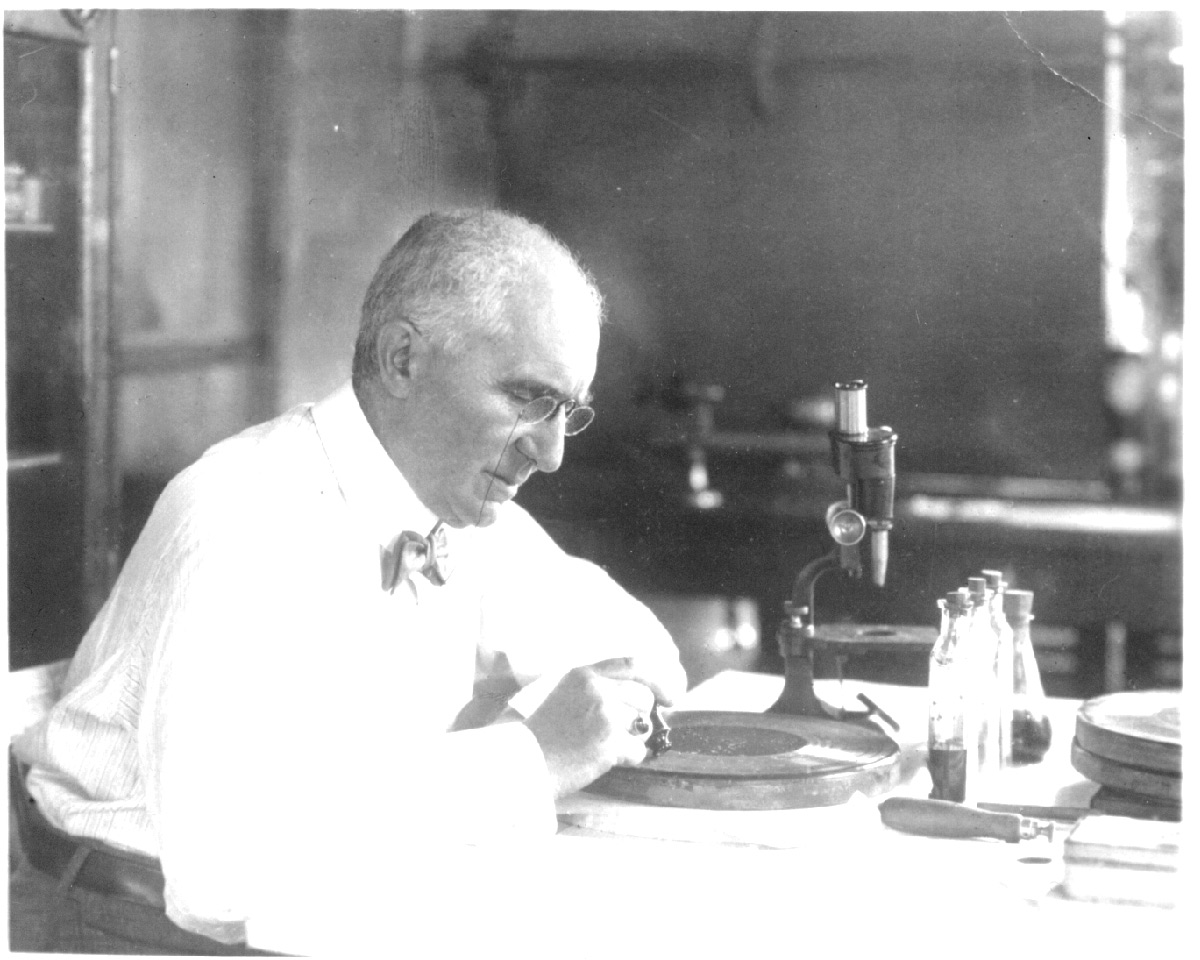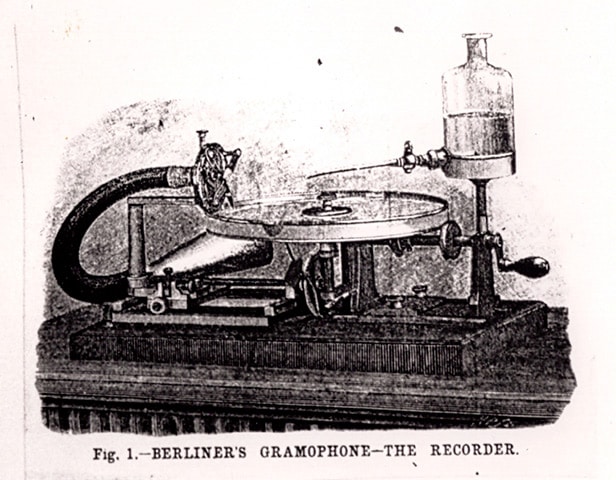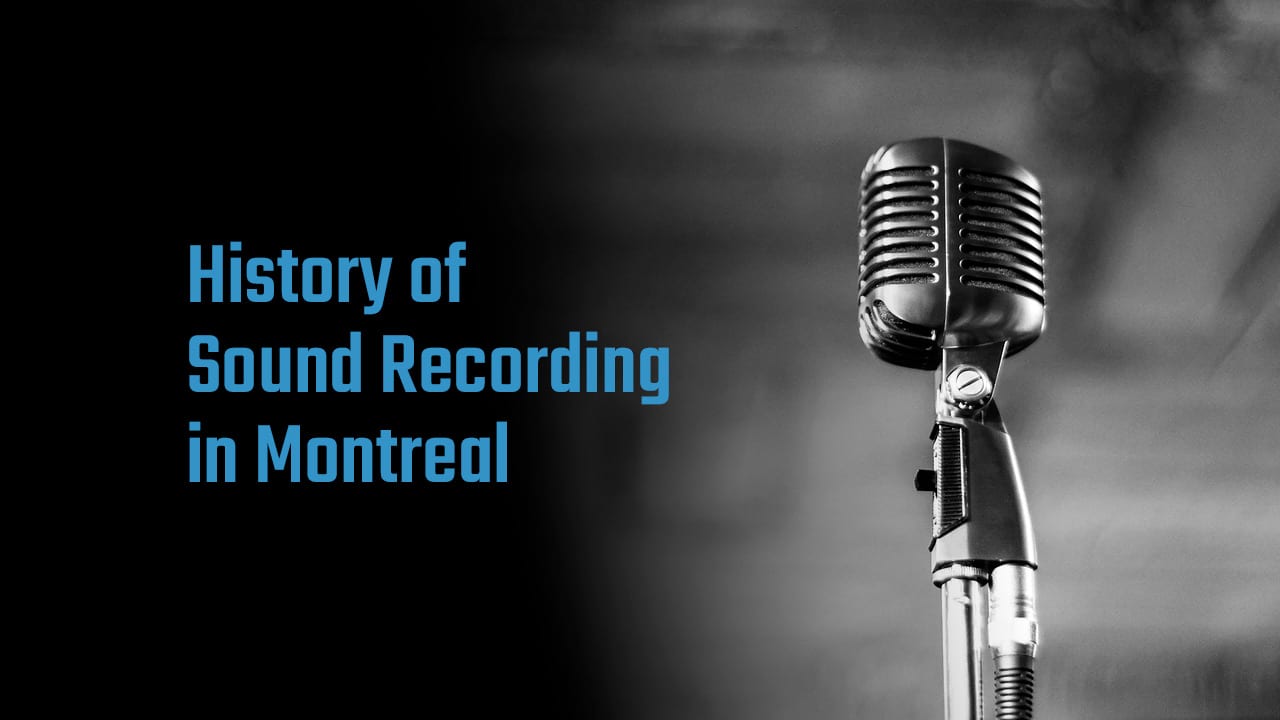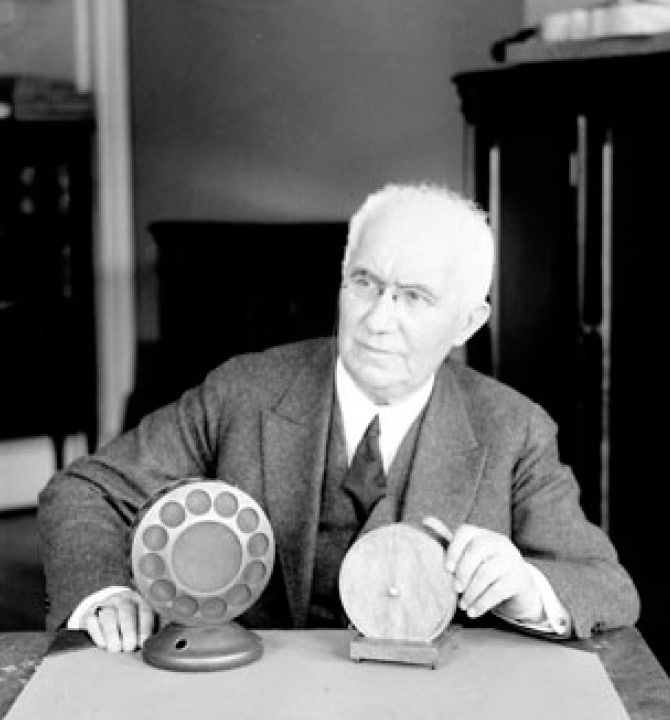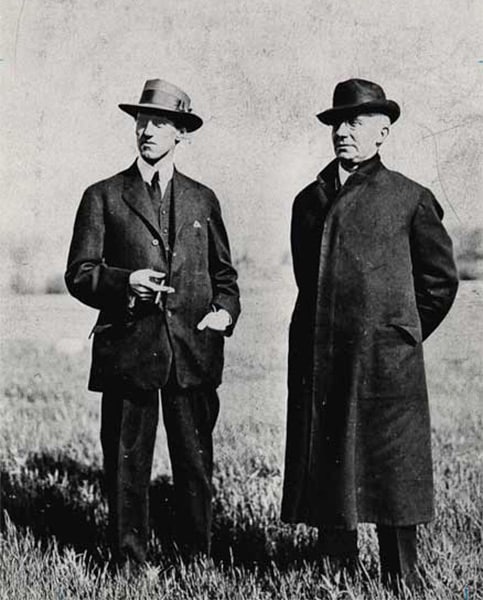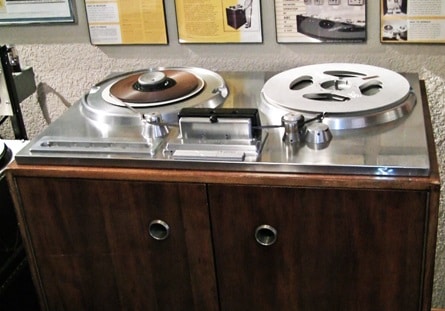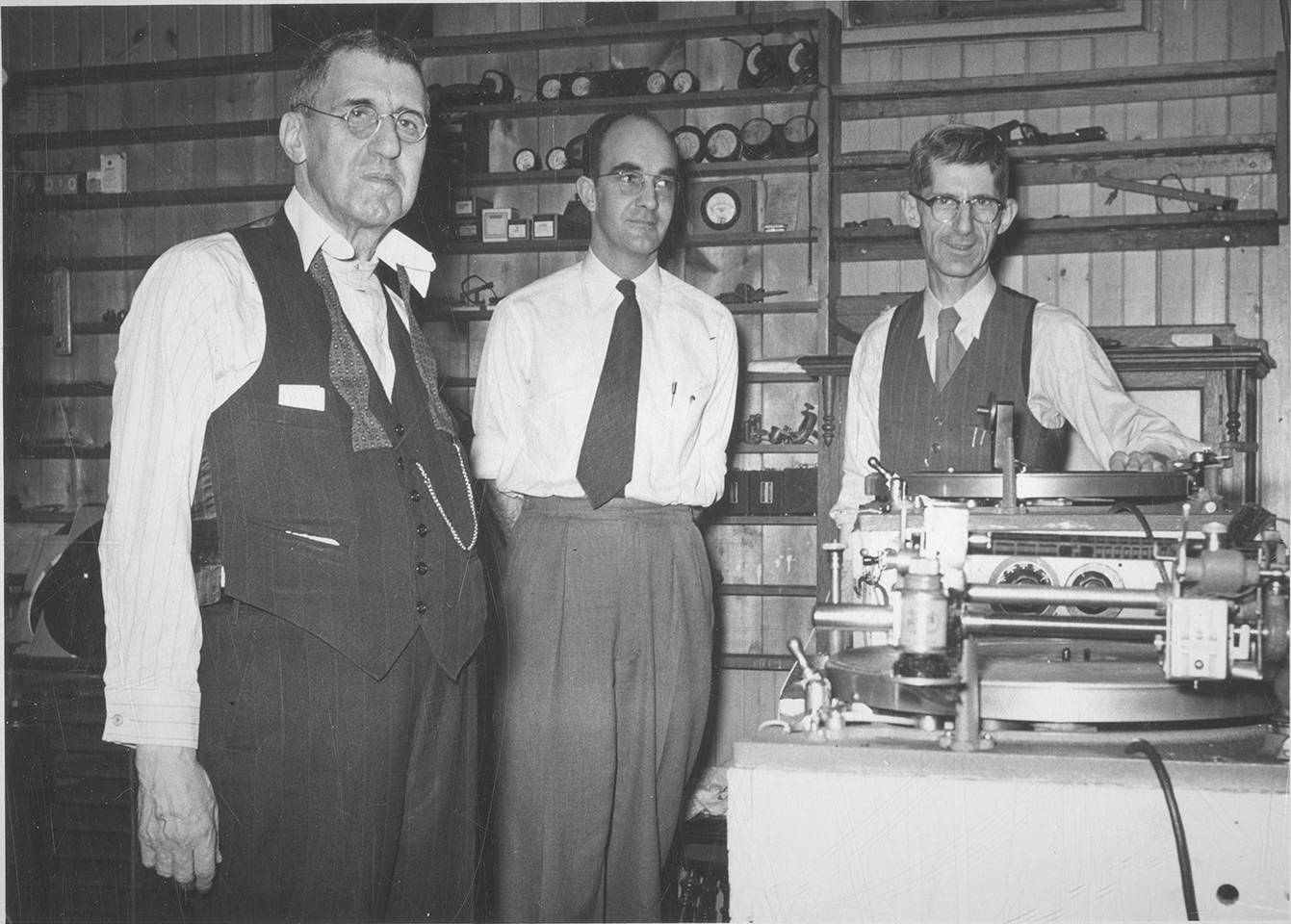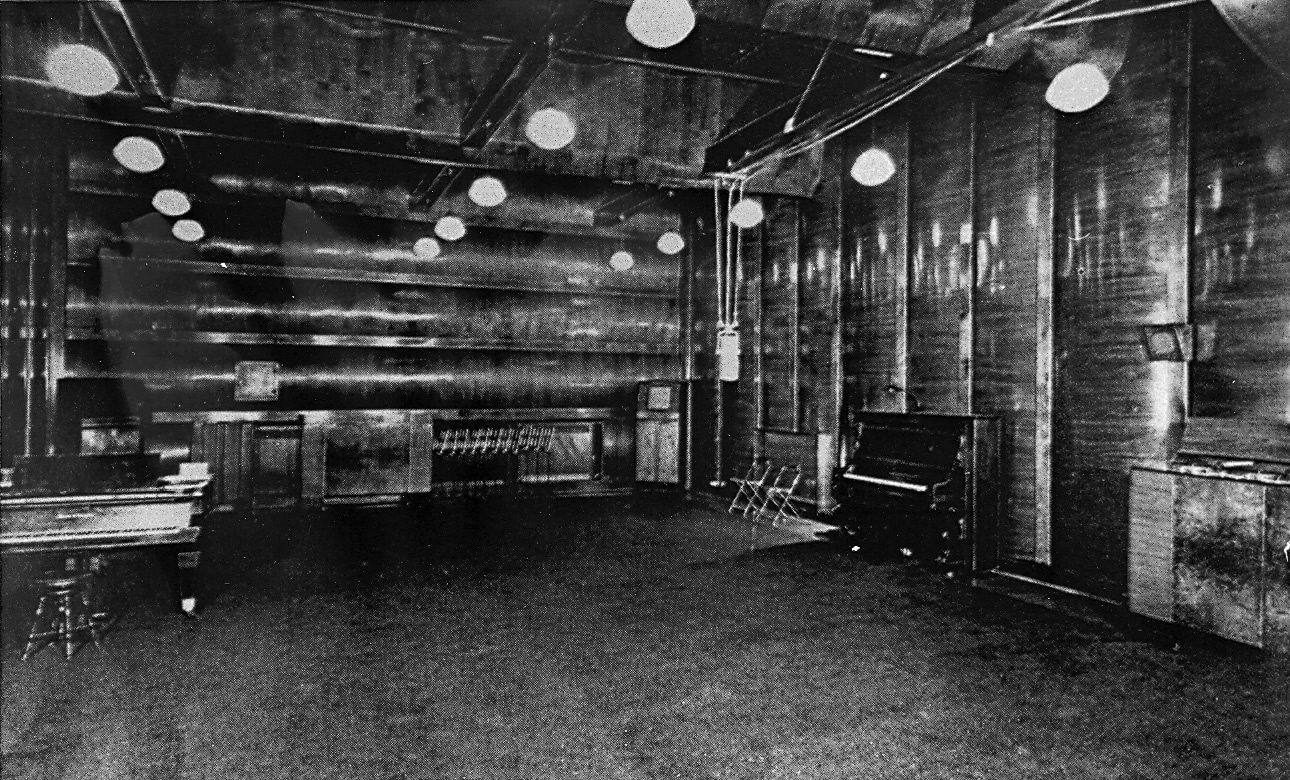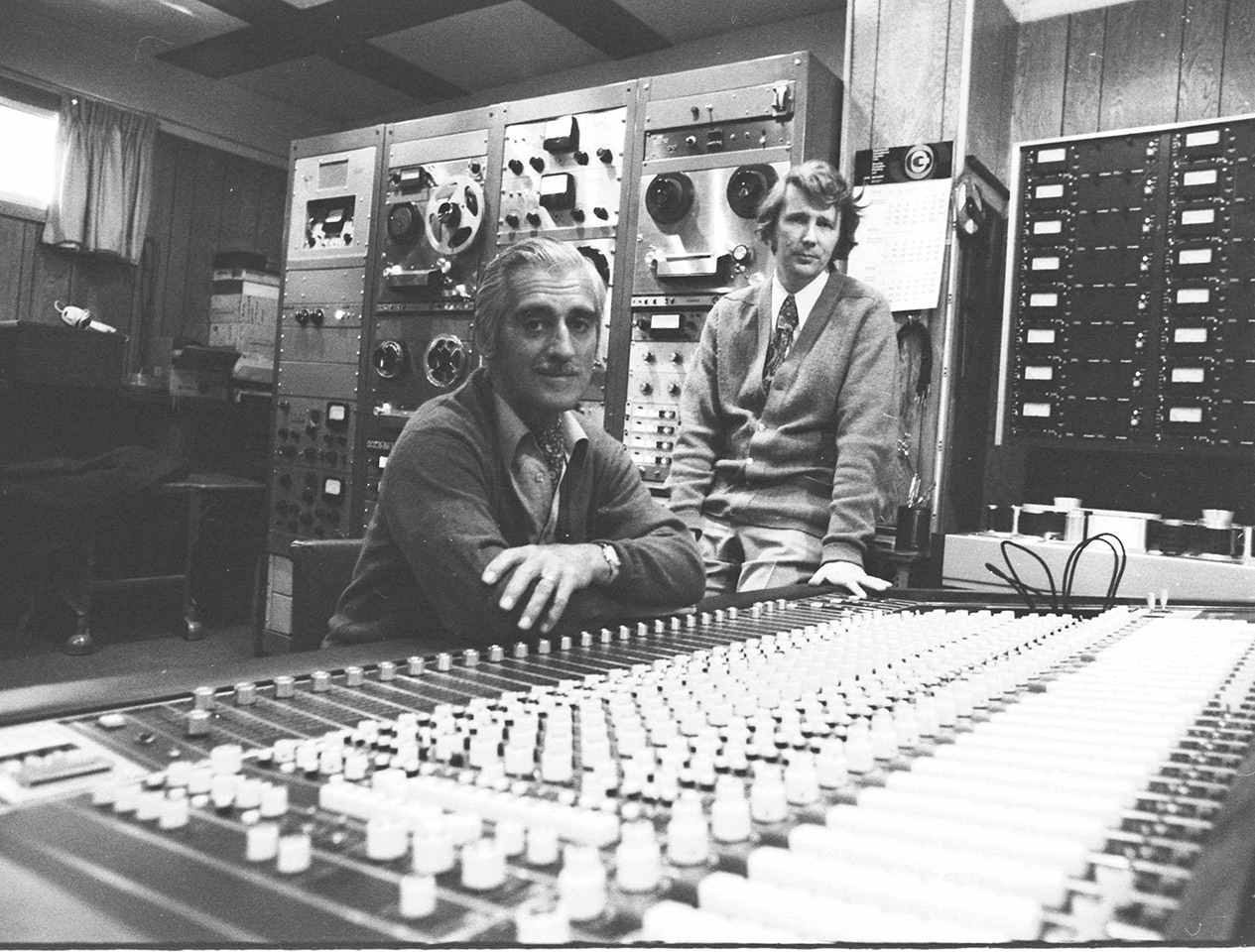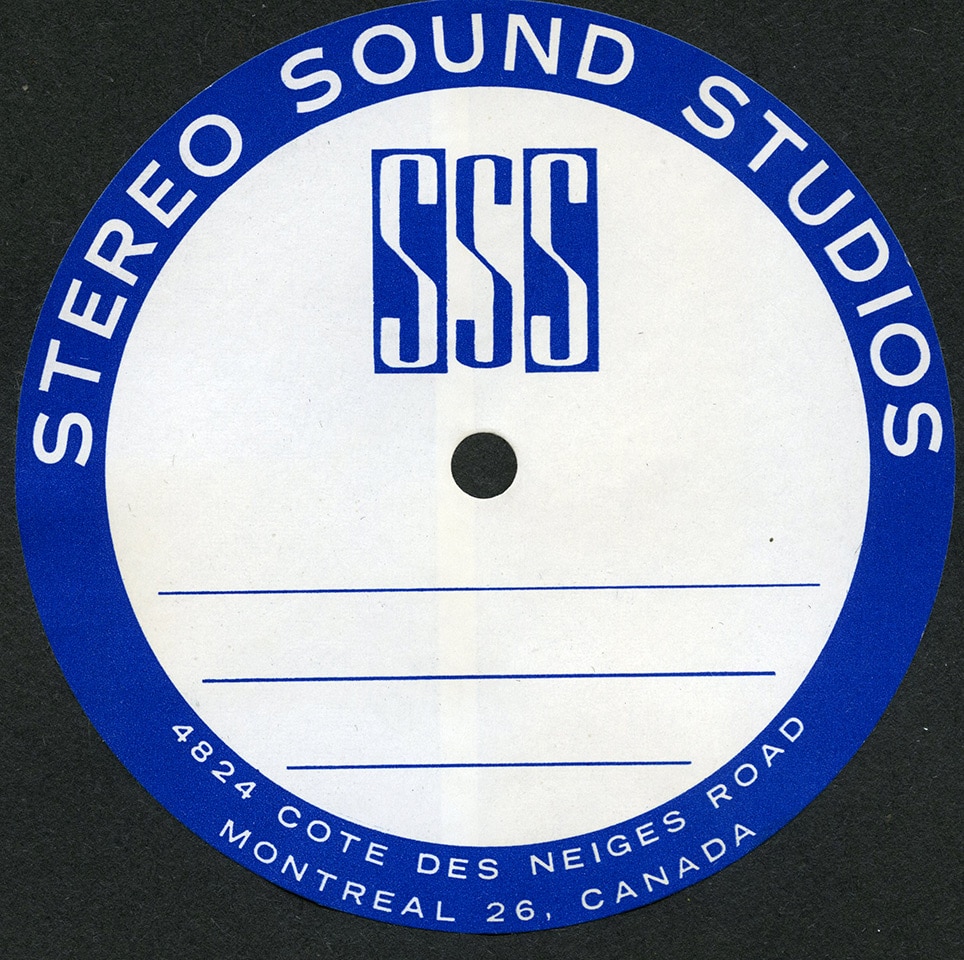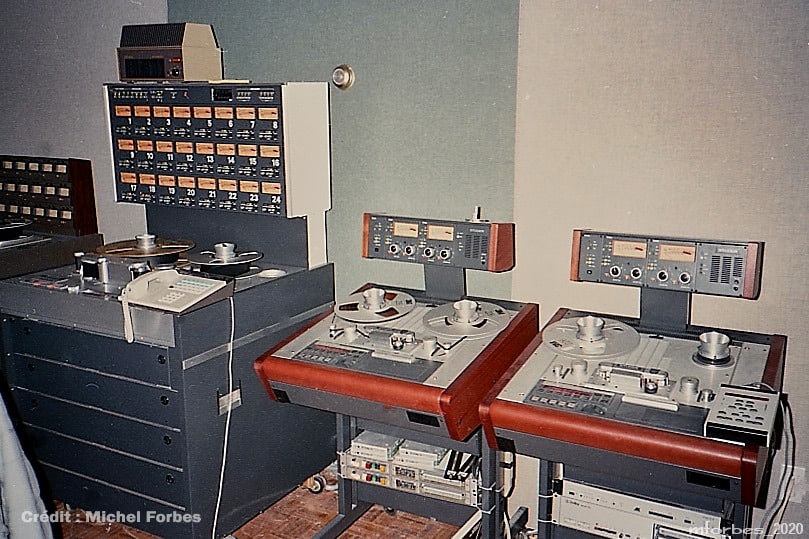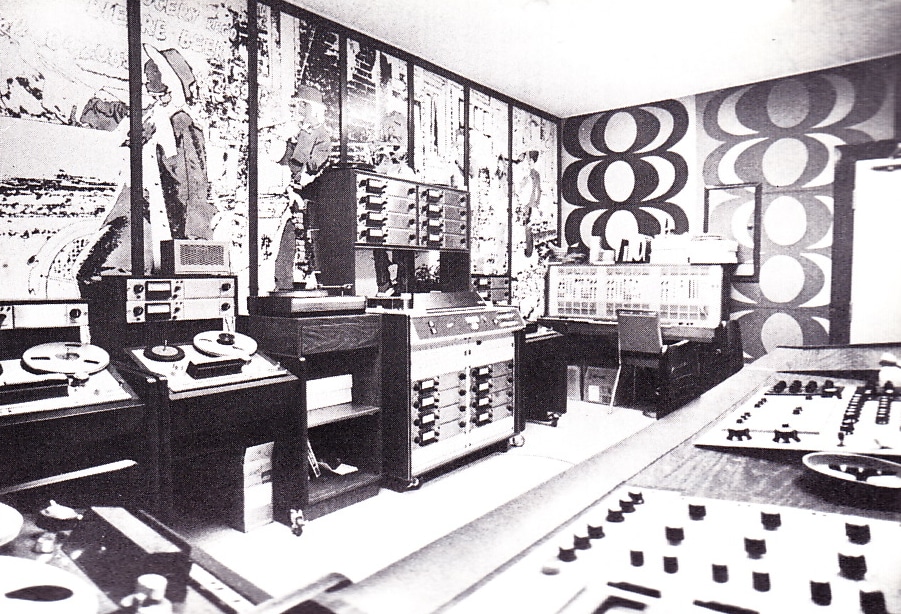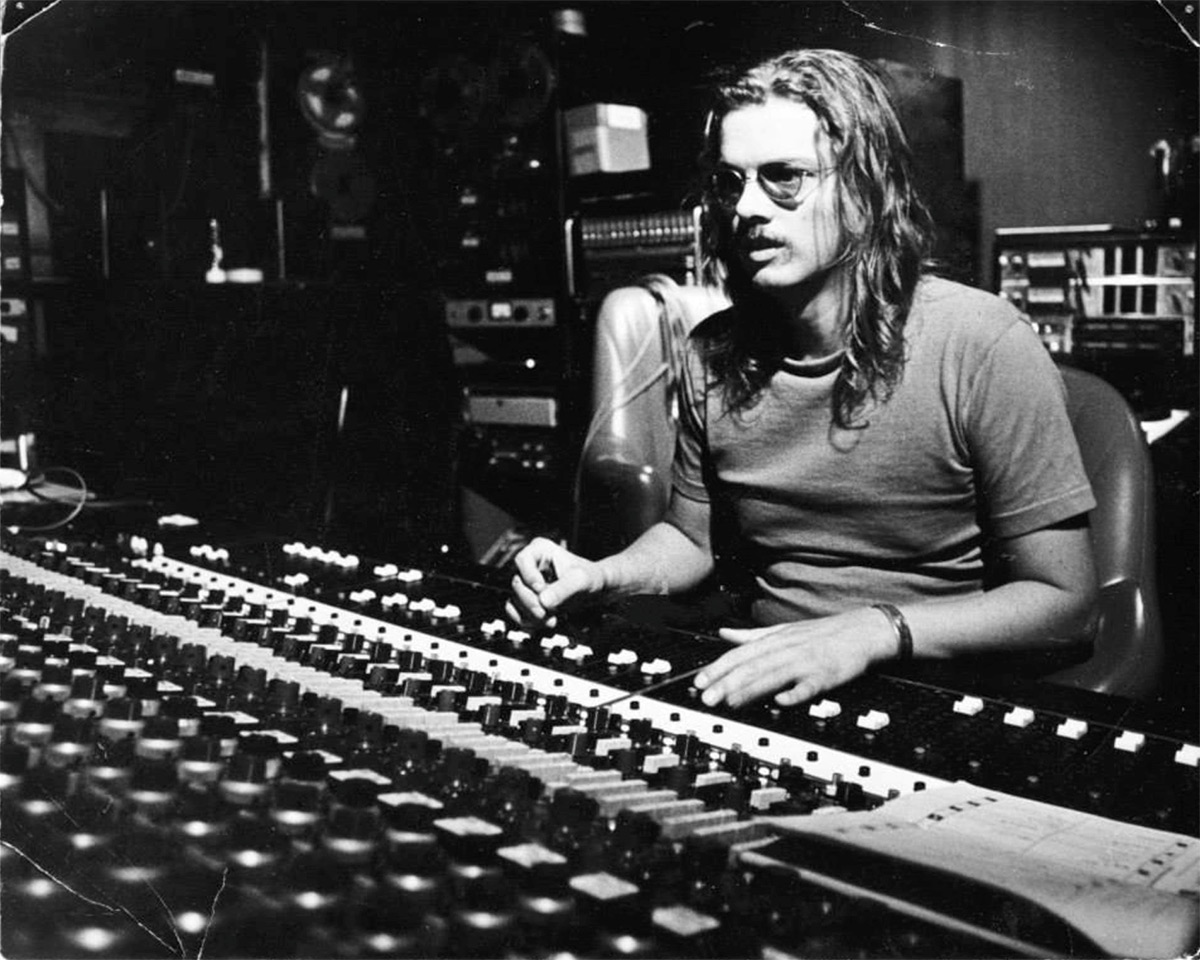History of Sound Recording in Montreal
The history of sound recording in Montreal is dotted with remarkable contributions and innovations that have shaped the music industry as we know it today. From the first cylinder recordings to modern digital technologies, each stage has been marked by visionary figures and iconic studios that have pushed the boundaries of what is possible.
This virtual exhibition was created to pay homage to all those who have participated directly or indirectly in this fascinating story.
Original text written by Timothy Hewlings.
Integration and updates by François Pilon.
If you would like to contribute additions, share documents, or archives to enhance this exhibition, please contact us. We can all benefit.
Introduction Would you believe that over a hundred years have come and gone since the day Herbert Berliner (son of Emile Berliner, the inventor of the gramophone), opened the first Canadian recording studio on Peel Street in Montreal? The year was 1904 and very few people could have imagined at the time the full impact that this event would have on the world, as they knew it back then. The opening of this studio marked the beginning of an industrial adventure that revolutionized the world of communications and introduced music and sound recordings in every household in the country. We present this exhibition as a tribute to Berliner’s efforts and […]
Read moreEven though Thomas Edison was the first to invent a machine that could record and playback sound, it is to Emile Berliner that we owe the greatest debt of gratitude for the spread of this new technology and the rapid growth of the sound recording industry. Where Edison’s phonographs used cylinders that had to be recorded one at a time, Berliner’s own invention, the gramophone, made use of flat records that could be pressed in great numbers from the mould of a single original recording. It is no wonder that records eventually won out over cylinders. In the early years of the 20th Century, sound recording efforts in Montreal were […]
Read moreDuring the 1920s, important improvements were made by the disk industry to its product as it went from acoustical to electrical recording. As the 1930s rolled in, more detailed research on magnetic recording was carried out leading, ten years later, to a new revolution, as optical film recorders appeared, followed by steel wire and, finally, magnetic tape recorders. Following in the steps of Herbert Berliner, other research was also being carried out on 33 rpm disks with higher groves density. This research brought about the introduction by Columbia in 1948 of the first long playing 33 rpm disks, followed a few months later by RCA Victor’s counter move, the launch […]
Read moreBorn in Hanover, Germany, in 1851, Emile Berliner immigrated to the United States in 1870 where he proceeded to become a self-taught scientist and an inventor. He made his first significant breakthrough in 1877, when he invented a microphone that revolutionized the telephone industry. Over the years, he would invent several other items, in a variety of fields, but none better known than his famous gramophone and accompanying flat disks for which he was granted a US patent in 1887. Ten years later, the inventor sought and obtained a Canadian patent for the same invention and, shortly thereafter, opened an office in Montreal. Over the next 25 years, working in […]
Read moreWhen the Berliner Gram-O-Phone Company of Canada received its charter in 1904, Herbert Samuel (H. S.) Berliner (1882-1966), the eldest son of Emile Berliner, was 24 years old. Along with two other shareholders, he was named director of the new company. Could he have known at the time that he would spend the next 60 years in the business of sound recording and become one of the most celebrated figure, after his father, of that industry? Passionate about technical matters and innovations, H. S. Berliner managed all his life to stay at the forefront of his industry’s many developments. While working for Berliner, for instance, he was among the first […]
Read moreDuring the course of its 40 odd years of existence, the Compo Company recorded many Canadian artists; under its own Compo label, but also under the Apex label. In 1925, when the Starr Piano Co. ended its recording activities, Compo took over the Starr name and continued to use it until 1953. Starting in the early 1930’s, Compo also began a long association with Decca Records. Among the artists that benefited from H. S. Berliner’s expertise and that of his staff, which included Robert Chislett and John Bradley, were such greats as Mary Travers (La Bolduc), J. O. La Madeleine, Isidore Soucy, Rex Battle, Paul Dufault, Rodolphe Plamondon and Don […]
Read moreIn 1948, John R. Bradley became H. S. Berliner’s assistant, a position he held until 1966. His responsibilities included recording and producing artists for Compo’s labels in Montreal and New York. He was also responsible for researching and implementing the latest in disk cutting technology and, later, for acquiring tape recording technology. After the studio closed, he was made responsible for the custom record division of Compo in Lachine, which pressed records for outside labels including Capitol, London, Polydor and Trans-Canada. When MCA closed the Lachine Plant and opened a new facility, Bradley was involved in the design of the plant and later was put in charge of the tape […]
Read moreBorn in Quebec City in 1896, A. (Albert) Hugh Joseph was a graduate in chemistry from McGill University who began a career in the recording industry in 1923. That year, he was hired as a chemist by Edgard Berliner, one of the inventor’s sons and Vice-president of the Berliner Gramophone Company at the time. Joseph was initially in charge of preparing the waxes and pastes used in the production of masters and records, but his curiosity lead him to explore all facets of the sound recording process. He soon became indispensable and thus, in spite of the changes in names and ownership which transformed the Berliner company into the Victor […]
Read moreIn 1929, the Radio Corporation of America (RCA) merged with the Victor Talking Machine Company of Canada which then became RCA Victor. It was thus in the RCA Victor studio that scores of works were recorded, in the 1930s and 1940s, on the Victor and Bluebird labels. In 1942, the company moved into a brand new studio, at 1050 Lacasse Street. This facility was the first in Canada ever to use formal acoustical treatment in its construction. Its design was created in the RCA labs in Camden, New Jersey. Following the lead of the Berliner family, the RCA Victor studio continued to record numerous Canadian’s artists, both English and French. […]
Read moreVery little is known about the Walter P. Downes Studio. It seems to have existed from the late 1930s or early 40s until the early 1960s. Downes studio was built on the roof of the Dominion Square Building, quite close to a noisy elevator housing. Downes was also known to be the local representative and agent for the Presto Company, manufacturer of disk cutting lathes and styli and, later, of tape-recording equipment. The studio’s primary business was recording radio transcriptions. After the Compo Studio closed, Downes did some music recording for Apex and other Compo labels. In the summer of 1957, the soundtrack of the McGill University stage revue “My […]
Read moreIn 1937, Jean-Marc Audet, also known as “Marko”, began his career in the recording industry at radio station CKAC, recording programs off the wire to disk. He cut 16” master discs off-air which were then sent to Compo to be copied and sent to 75 stations across Canada. Live shows were recorded with 2 records lathes at a time. Commercials were recorded, 10 spots at a time to 16” disks. In 1948, Jean-Marc Audet opened his first studio at 1477 Mountain Street, Montreal. Studio Marko cultivated the advertising business, recording commercials for radio, sound for TV spots and dubbing films. After an illness in 1974, Jean-Marc sold his business to […]
Read moreJack Raskin seems to have had a background in Radio, TV and theatre. Research in Lovell’s Directories, shows that in the early ‘50s (about 1952) he became the secretary of the Association of Canadian Radio and Television Artists (ACTRA). He appears to have worked for that organisation until about 1955 when he joined Ed Feilgleman Associates, who were theatrical agents. He seems to have worked at that agency until after Feigleman’s death and in 1959 it became “The House of Stars”. This seems to have lasted until about 1963. Sometime in late1961 or early 1962, Raskin and a partner, Maurice Bougie of the comedy team “Les Tune-up Boys” opened Stereo […]
Read moreDuring the 1960s and 1970s, the combination of Expo 67 and the Olympic Games created an atmosphere like no other ever experienced by Montrealer’s. As the city got ready to live the most extraordinary decade of its history, the impact was felt in all sectors of the economy. This was certainly true in the field of sound recording where an increased demand for all manner of recordings, music, jingles, film and others, fuelled a rapid expansion. The late1960s and 1970s were also influenced by several new social dynamics that had a direct impact on events. As “baby boomers” came of age, for instance, with their new attitudes towards consumerism and […]
Read moreAndré Perry is a giant in the Quebec recording industry. Starting in the late 1960s, he was involved in an enormous number of recordings of the “Relève”, beginning with Robert Charlebois. After he recorded John Lennon’s “Give Peace a Chance” in June of 1969, he was determined to put his Ville Brossard studio on the map as a place to record major international artists. In order to do this, he was relentless in his pursuit of new recording technology – always ahead of his time. His was the first studio in Montreal to purchase an 8-track and, later, a 16-track tape recorder. His new studio, at 1135 Amherst Square, was […]
Read moreCharles “Chuck” Gray Charles “Chuck” Gray was born in the United-States. Chuck and his wife Judy founded Studio Six in 1969. At first, they moved from Ottawa to Montreal and they started looking for recording spaces and finally settled on a large space on the 5th floor of 1180 St-Antoine Street. Studio Six The original recording gear was very simple consisting of two Gatley mixers and a couple of tape recorders. It was the first console with “channel strips”. It was not a good console. My first job was to fix the problems, I even changed the design of the EQ which didn’t work. By the way, here is an […]
Read more
